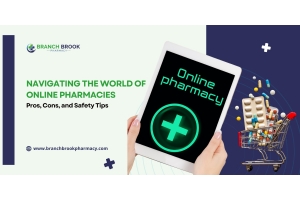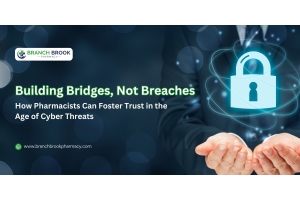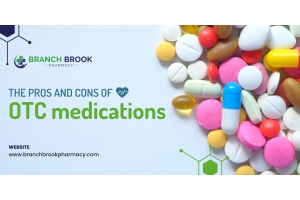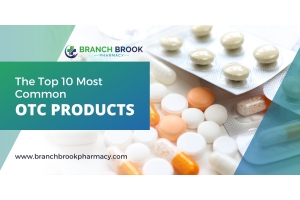Building Bridges, Not Breaches: How Pharmacists Can Foster Trust in the Age of Cyber Threats

In today's interconnected world, where technology permeates every aspect of our lives, the healthcare sector faces unique challenges in safeguarding sensitive data and maintaining trust. Pharmacists, as key players in the healthcare ecosystem, are tasked with not only dispensing medications but also protecting the privacy and security of patient information.
With cyber threats on the rise, pharmacists must build bridges of trust with their patients and colleagues rather than succumbing to breaches that can compromise this trust. Let's explore how pharmacists can navigate the digital landscape while upholding the pillars of trust and security.
Safeguarding Patient Data: The Pharmacist's Responsibility
As custodians of patient health information, pharmacists shoulder a significant responsibility in ensuring the confidentiality and integrity of this data. Here are some essential strategies to uphold patient trust:
Vigilance in Data Handling
- Implement robust encryption protocols to secure electronic prescriptions and patient records.
- Regularly update software systems and applications to patch vulnerabilities and mitigate potential cyber threats.
- Utilize secure communication channels for transmitting sensitive information, such as encrypted emails or secure messaging platforms.
Educating Patients on Cyber Hygiene
- Offer guidance to patients on safeguarding their personal health information, including the importance of strong passwords, recognizing phishing attempts, and avoiding sharing sensitive data over unsecured networks.
- Provide resources or workshops on cybersecurity best practices tailored to the needs of patients, especially those who may be more vulnerable to online scams or fraud.
Collaborative Efforts: Strengthening Trust Across the Healthcare Continuum
Building bridges of trust extends beyond the pharmacist-patient relationship to encompass collaboration with other healthcare stakeholders. By fostering a culture of cooperation and information sharing, pharmacists can fortify the resilience of the healthcare system against cyber threats:
| Initiative | Description |
| Interdisciplinary Training and Awareness Programs | Organize interdisciplinary workshops or seminars involving pharmacists, physicians, and other healthcare professionals to enhance awareness of cybersecurity risks and best practices. |
| Foster a collaborative mindset by encouraging open dialogue and knowledge exchange on emerging cyber threats and strategies for mitigating them effectively. | |
| Establishing Secure Information Sharing Protocols | Develop standardized protocols for secure data exchange between pharmacies, healthcare providers, and insurance companies, ensuring that patient information remains protected throughout the continuum of care. |
| Implement secure authentication mechanisms and access controls to limit unauthorized access to sensitive data while facilitating seamless information flow within the healthcare network. |
What are some best practices for pharmacists to follow when it comes to cybersecurity?
Some effective strategies for pharmacists to mitigate cybersecurity risks include:
1. Staff Training and Awareness:
- Train staff on cybersecurity best practices, such as recognizing phishing attacks and avoiding risky online behaviours
- Educate employees on the importance of using complex passwords and implementing multi-factor authentication
2. Proper Password Management:
- Ensure passwords are strong, unique for each account, and not shared among staff members.
- Implement two-factor authentication for an added layer of security.
3. Address Internet Vulnerabilities
- Conduct regular vulnerability scanning and ensure devices are properly configured.
- Employ best practices for remote desktop services and keep all software up to date.
4. Utilize Security Software
- Install web filtering, antimalware, antivirus software, and firewalls on all devices to protect against cyberattacks.
- Regularly update security software to stay protected against evolving threats.
5. Data Backup and Encryption
- Back up critical data regularly and store backups offline to prevent data loss in case of a cyberattack.
- Encrypt sensitive data both at rest and in transit for an added layer of protection.
6. Regular Security Checkups
- Conduct regular security assessments to identify vulnerabilities and address them promptly.
- Collaborate with cybersecurity experts to stay updated on the latest security trends and receive tailored advice.
7. Compliance with Regulations
- Adhere to industry regulations like the Health Insurance Portability and Accountability Act (HIPAA) to prevent data breaches.
- Stay informed about existing company policies and consider hiring IT experts for detailed security planning.
By implementing these strategies, pharmacists can strengthen their cybersecurity defences, protect patient data, and reduce the risks associated with cyber threats in the healthcare industry.
Embracing Technological Innovations: Balancing Convenience with Security
As technology continues to advance, pharmacists have an opportunity to leverage innovative solutions to enhance patient care while safeguarding against cyber threats. However, it's essential to strike a balance between convenience and security to maintain patient trust:
| Technological Innovation | Description |
| Integration of Telepharmacy and Remote Monitoring | Explore telepharmacy solutions that enable remote medication counselling and monitoring, providing patients with convenient access to pharmaceutical services while ensuring the security of telecommunication channels. |
| Implement remote monitoring systems for medication adherence and adverse drug reactions, utilizing secure platforms that adhere to regulatory standards for data privacy and protection. | |
| Adoption of Blockchain Technology in Pharmaceutical Supply Chain | Embrace blockchain technology to enhance transparency and traceability in the pharmaceutical supply chain, reducing the risk of counterfeit medications and unauthorized access to sensitive supply chain data. |
| Collaborate with industry partners to establish blockchain-based platforms for verifying the authenticity of pharmaceutical products and tracking their journey from manufacturer to patient, bolstering trust and confidence in medication safety. |
Also Read: Your Voice Matters: Building a Collaborative Approach to NAFLD Management in the US
Conclusion
In the face of escalating cyber threats, pharmacists play a pivotal role in building bridges of trust within the healthcare ecosystem. By prioritizing the security of patient data, fostering collaborative relationships with healthcare stakeholders, and embracing technological innovations responsibly, pharmacists can navigate the digital landscape with confidence,
ensuring the integrity of patient care and preserving trust in an age of cyber vulnerabilities.
Let's work together to bridge the gap between cybersecurity and patient well-being, forging a future where healthcare remains resilient, trustworthy, and secure.










